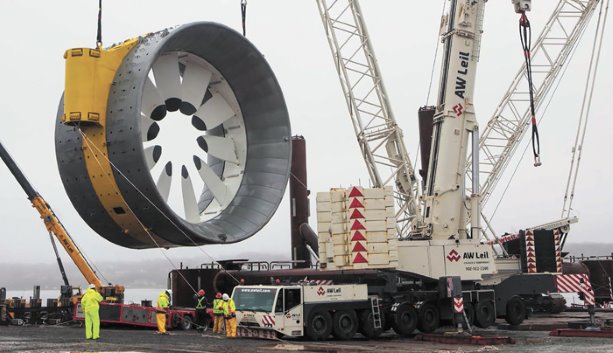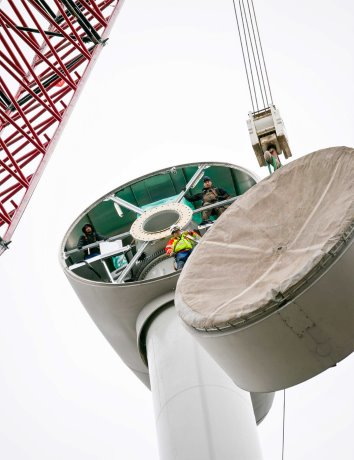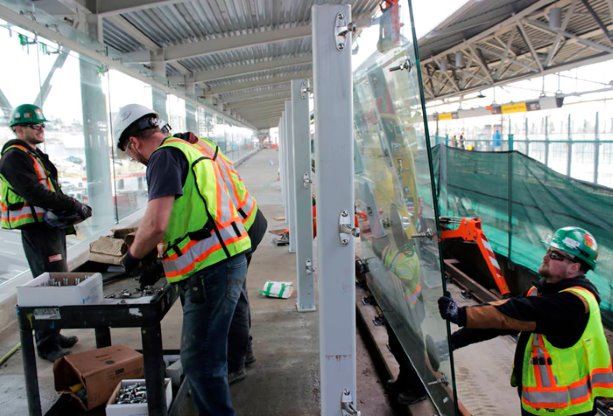The transition to a zero carbon economy will generate millions of jobs in the building sector in the next 30 years, suggests a recent report commissioned by Canada’s Building Trades Unions (CBTU).
The key to job creation in the sector leading up to 2050, when many of Canada’s stakeholders are aiming for zero-carbon builds, will be construction of new types of energy infrastructure, said the report.
The study, written by the Vancouver-based Columbia Institute and titled Jobs for Tomorrow — Canada’s Building Trades and Net Zero Emissions, also offers a long view of what types of energy will be the winners in the race for market domination as the federal government promotes a transition to clean energy to meet Canada’s Paris climate change commitments.
After consulting globally and observing where other jurisdictions are heading, the institute indicated the supply grid will include hydroelectric power (40 per cent), wind (25 per cent), solar (10 per cent), tidal and wave (five per cent) and legacy nuclear (five per cent).
Fossil fuels will still be around but will be of minimal importance in terms of construction sector job creation, said the report.
Bob Blakely
CBTU
"Everyone, myself included, is surprised by the number of jobs that will be created just by building the infrastructure for our low-carbon economy," said Charley Beresford, executive director of the Columbia Institute.
Both Beresford and Bob Blakely, Canadian operating officer for the CBTU, said there will not be merely a transition in construction jobs from carbon reliant to clean but rather net growth.
"I am neither an economist nor a futurist, but as we begin to develop new energy sources, we are going to continue to use some of the extant sources, I think we are going to be doubling up — doing more," said Blakely.
Said Beresford, "The projects are evolving, so there are different projects, but in addition to there being additional projects, there will be a big demand for more of them."
The report also noted Canada’s population is expected to reach 48 million by 2050.
The paper examined new green building, zero-carbon retrofits, electricity supply, the creation of district energy systems and construction of new transit and determined there will be four million new construction jobs created by 2050.
The non-residential green-building sector alone is expected create almost two million jobs.
In the energy sector, wind power is expected to add over 200,000 full-time construction jobs. Solar will create 438,000 jobs. Tidal and wave may be responsible for 110,000 construction jobs.
Meanwhile nuclear, which now produces over half of Ontario’s power, will be severely diminished in size but ongoing maintenance could keep 30,000 construction workers on the job.
Blakely said natural gas will be used in the next couple of decades as an interim step, leading to an almost total reliance on clean energy by mid-century.
"If you look at nuclear, Ontario had quite an ambitious idea for new building. The new building is at a minimum 15 years away, if they are even going to do it, and the refurbishing is a 10-year project," he said. "There is potential for small module reactors, but that is technology that is not in the bag yet, a lot like tidal.
"Will we stop using natural gas, coal and fossil fuel derivatives tomorrow? Only an idiot would think that…it is not going away tomorrow. The question is, how can we build infrastructure for something else that is going to work?"
The report suggests building small district energy systems in Canada’s mid-size and large cities would create over 547,000 construction jobs by 2050. Beresford said community and regional systems are better than long-distance transmission because the latter wastes tremendous energy.
She also said merely extrapolating transit expenditures 33 years into the future based on current federal and provincial infrastructure spending plans will result in $150 billion spent on urban transit infrastructure, creating about 245,000 direct construction jobs.
Blakely said the report offers reassurance to construction stakeholders that there will be lots of jobs available in the future. But the growth predicted, coupled with the transition in the types of jobs performed as well as the retirement of some 22 per cent of skilled workers nationally in the near future, puts pressure on colleges and unions, who currently train skilled trades workers, to adapt.
"Community colleges, we have to interface with them and say, ‘if you think the boilermaker trade is going to come to an end when they stop making coal-fired boilers down the road, you are wrong,’ " said Blakely. "It may not be new skills but it may be a new application of skills."

1/3
Photo:
2/3












Recent Comments
comments for this post are closed